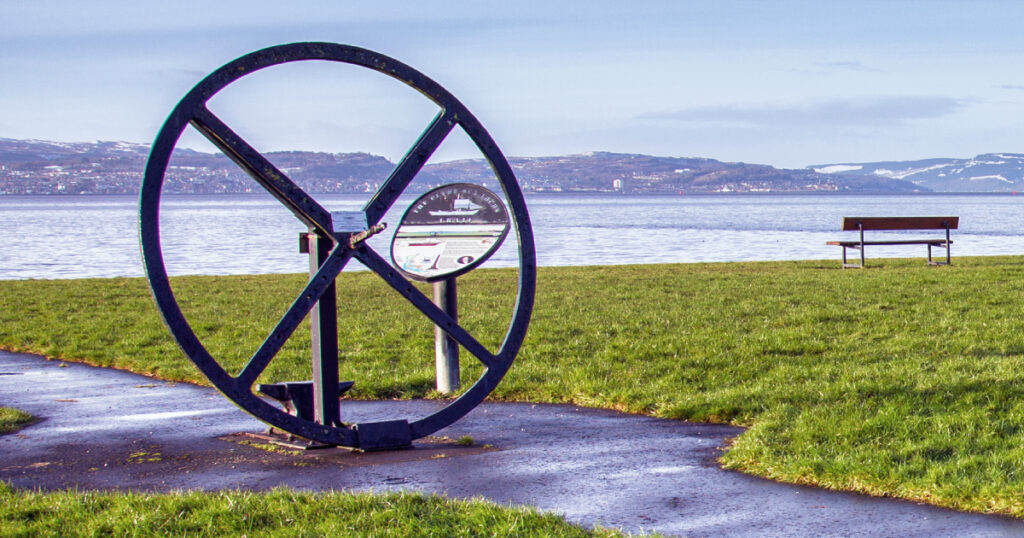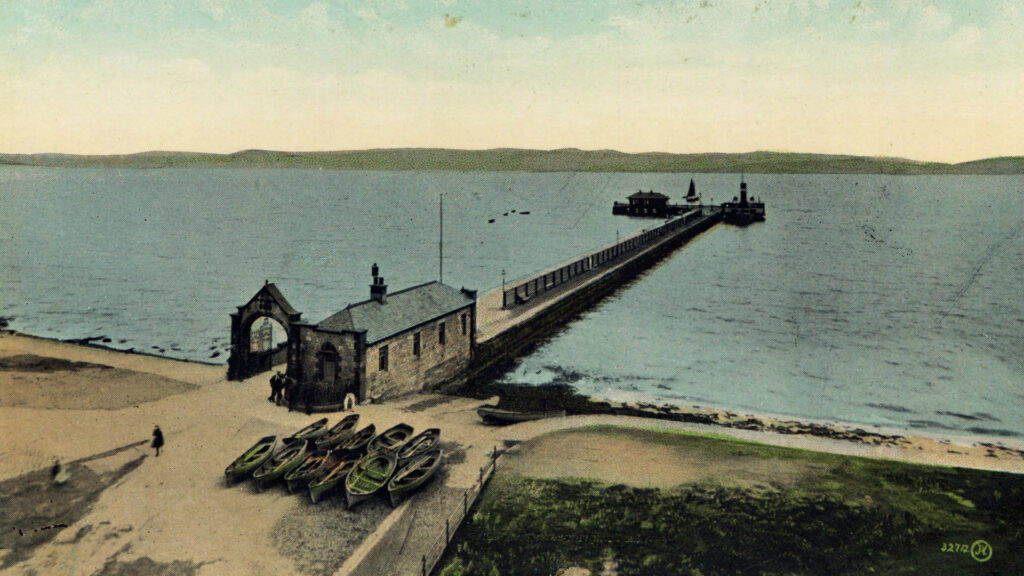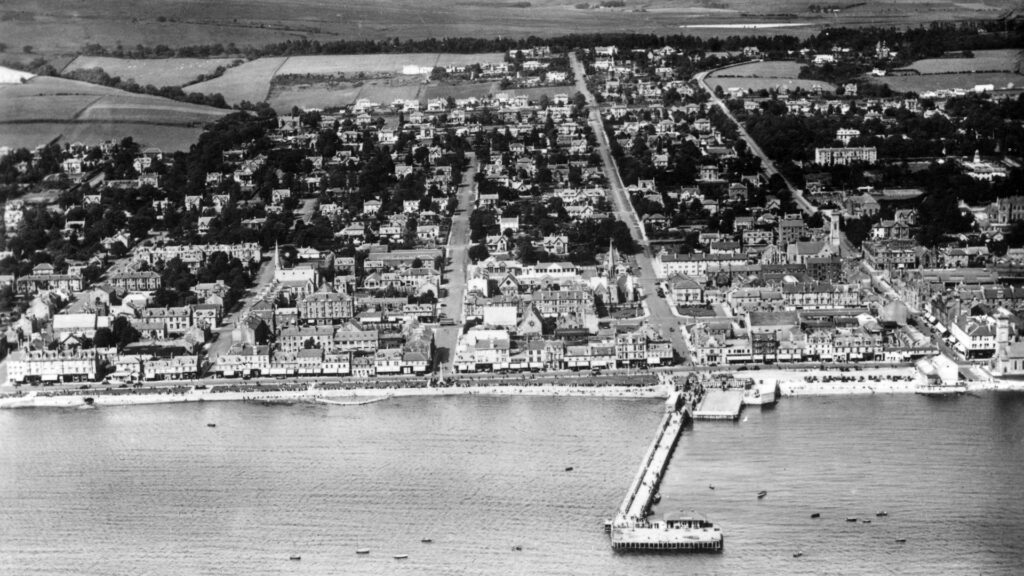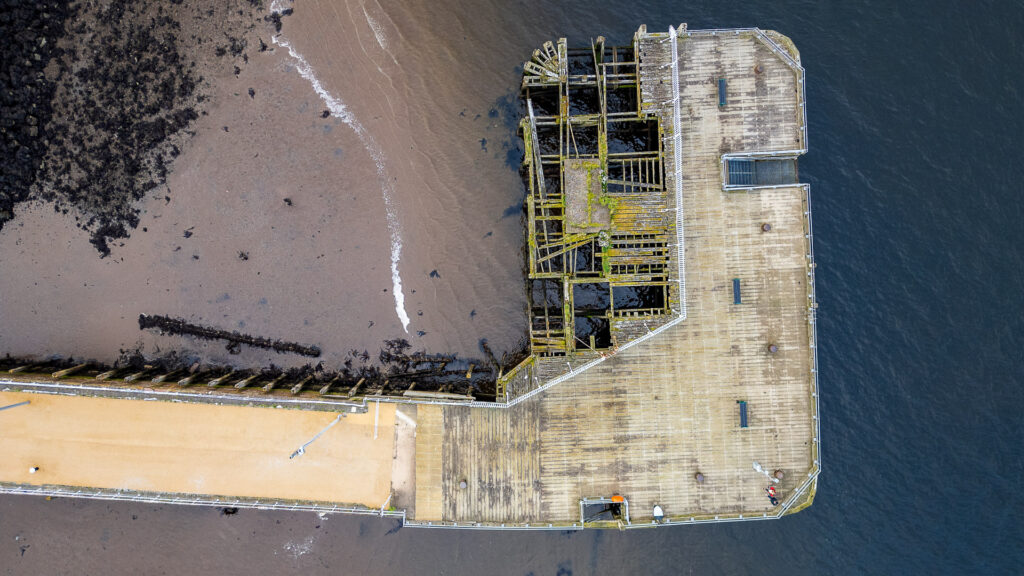Henry Bell & PS Comet
The Pier’s Listing by Historic Environment Scotland states :
Its early history is strongly associated with Henry Bell, who invented the first sea-going paddlesteamer … his invention and association with Helensburgh pier is nationally significant.
Henry Bell (Born near Linlithgow, 7 April 1767, died Helensburgh 14 November 1830) was described by Thomas Telford as the ‘ingenious and enterprising Mr Bell’. He was an early proponent of steam powered navigation, submitting proposals to the Admiralty from as early as 1800, and receiving support from figures such as Admiral Nelson.
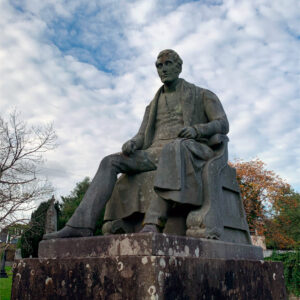
In Rhu Churchyard you can see the tomb of Henry Bell, who died in 1830. The grave was unmarked, and the statue of Bell was erected by shipbuilder Robert Napier of West Shandon in 1853.
In 1806 Henry Bell feued an area of land on the shore to the east of Helensburgh. Seeing an opportunity to capitalise on the new fashion for sea bathing, he built a hotel, the Baths Inn (later known as the Queen’s Hotel), which was run by his wife Margaret for nearly fifty years. By September 1809 Bell was advertising in the London Papers, with hot and cold bathing and fresh and salt-water baths. The Greenock Telegraph indicated he used an early experimental steam engine to heat his swimming pool!
Once the hotel and spa were established, he set about finding a way to transport guests safely and quickly to the hotel and the small but growing settlement of Helensburgh. Initially, in 1809, he ran a summer season stagecoach business running two coaches – the Lady Charlotte Sociable and the Mermaid – between Glasgow and Helensburgh, a journey that took some six hours. Travel by road was poor and the fly-boats (sail or oar powered) that brought the holiday makers and sea bathers were unreliable – if the wind was unfavourable it could take a whole day to reach Helensburgh.
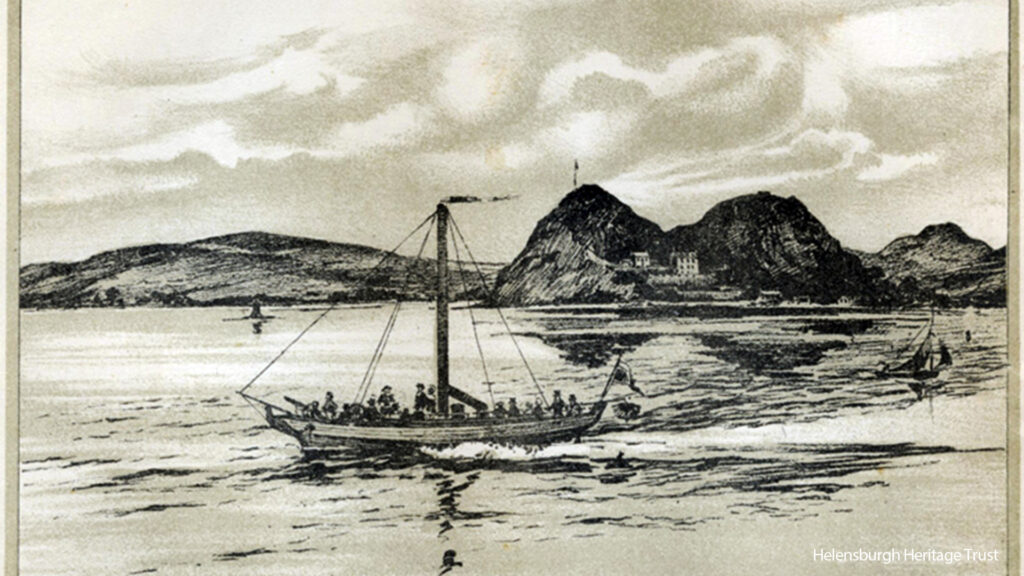
In 1810, Bell commissioned the construction of PS Comet, a steam powered paddle steamer – the first of its kind. Built at Port Glasgow by John Wood, the Comet launched in 1812 and was the first commercially successful steamship in Europe. Named for the Great Comet of 1811, she was 40 feet long and had a 4 horse power engine built by engineer John Robertson, with boiler by David Napier.
Bell built a small pier adjacent to the Baths Hotel at Hanover Street for the convenience of the guests. He also built a pump system to fill the sea bathing pools at the spa hotel. The impact of reliable steam navigation was dramatic and reduced journey time by water between Helensburgh and Glasgow from about 12 hours down to three and a half hours.
PS Comet was so successful that by 1816 there were steamboats running on most of the main rivers in Britain, and by 1819 there were 25 steamships in operation on the Clyde. To help her expand her operations from the relatively sheltered Clyde to the Scottish West Coast, she was beached at Helensburgh and extended to 73 feet and 10 inches in length and given a new 14 horsepower engine.
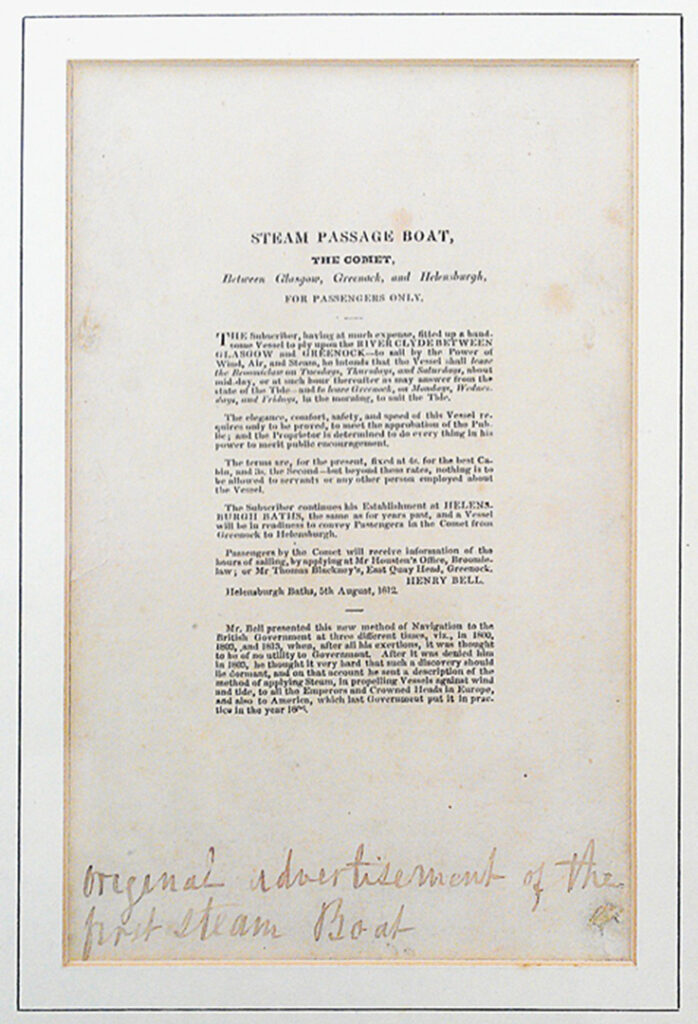
A copy of an 1812 advertisement for The Comet, courtesy of Helensburgh Heritage Trust
Unfortunately she was wrecked on 19 December 1820 at Craignish Point west of Crinan. No passengers were aboard and all crew got ashore safely. In 2020 the remains of the wreck were found on the seabed by the Dalirada Dive Club of Oban, and Dara Parsons, Head of Designations at Historic Environment Scotland, said:
There are very few examples of pre-1820 steamships known in the UK. As such the remains at the site of the Comet are extremely rare … Henry Bell’s Comet is of international significance as Europe’s first commercial steamship and occupies an important place in the history of steam-powered navigation.
Bell commissioned Comet II, which became the first steamer to go sea-to-sea through the Caledonian Canal, but unfortunately she sank after a collision with another steamer (the Ayr) near Gourock on 21 October 1825, with the loss of 62 lives. Bell never recovered and never having patented his invention, he died nearly penniless at the age of 62 in 1830.
The arrival of the steamboat saw Helensburgh’s reputation as a resort grow – in 1819, John Galt’s novel The Steamboat described a trip from Greenock to Helensburgh to visit Mr Bell’s Inn, and in 1824 William Harriston published his book of verse The Steam-Boat Traveller’s Remembrancer including verses on the town. There were also international visitors – Harriet Beecher Stowe, renowned American author of Uncle Tom’s Cabin (published 1852), called on Margaret Bell in April 1855, and was presented with ‘two engravings of the ‘Comet’, the first European steamer, by Mrs Bell, the venerable hostess of the Baths, towards whom she evinced particular attachment’.
Whilst PS Comet was the pioneer, other commercial steam ships quickly followed and were instrumental in the development of Helensburgh and the Clyde Sea Lochs as a summer holiday retreat. By 1834 it is recorded that the town’s population increased by 50% in the summer months and of the 217 households in the area, 126 of them offered summer lodgings. Reliable steam navigation on the Clyde was a catalyst for many wealthy Glasgow merchants to build impressive homes on its shores at Gourock, Dunoon, Rothesay, Rosneath and, of course Helensburgh.
The 1912 Comet Centenary Celebration was a grand affair, with Luncheon in the City Chambers in Glasgow a trip on RMS Columba to see warships, merchant vessels, yachts and motor boats in a display on the Clyde at Tail of the Bank, with the lines of shipping extending to Helensburgh, and finishing with fireworks at Glasgow Green. Public holidays were recommended and events were planned in Linlithgow, Greenock, Port Glasgow, Renfrew, Rothesay, Helensburgh, Dunoon and Bowling. All harbour towns in Scotland were invited to display flags and bunting on Saturday 31 August.
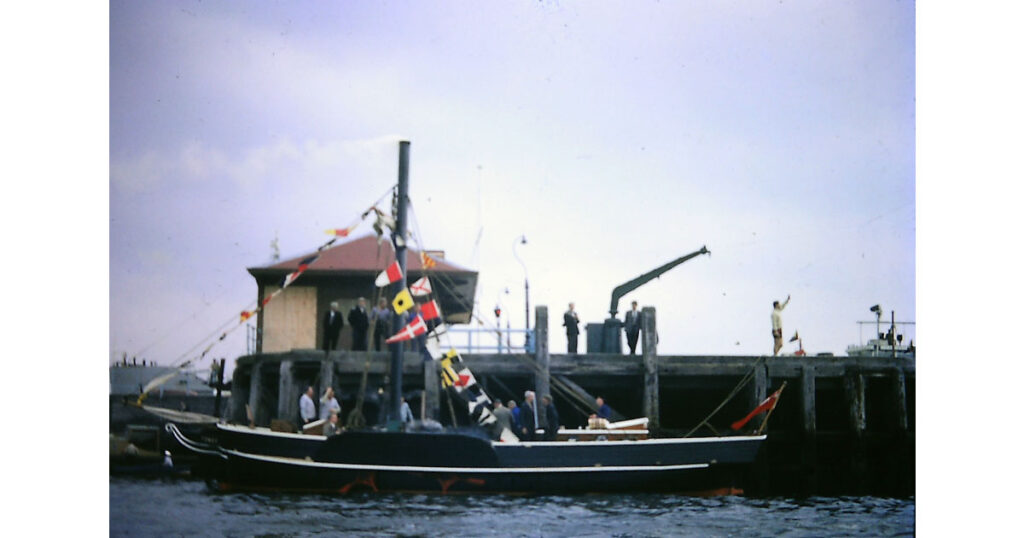
1962 visit of the Comet replica to Helensburgh, courtesy of Tim Henderson.
For the 150th Anniversary, in 1962 a full size replica of Comet was built by apprentices at Lithgows shipyard, and was sailed from Port Glasgow to Helensburgh accompanied by a flotilla.
The replica was then displayed in Port Glasgow until its condition deteriorated and it was dismantled in 2023. Inverclyde Council is planning a tender process for a Comet Replica Replacement.

A scale replica of the Comet is at Morrisons Supermarket on the eastern edge of the town
There is also a replica of Comet’s Bell on display at the Outdoor Museum in Colquhoun Square.
The original PS Comet engine flywheel, salvaged from the wreck, and anvil on which Helensburgh blacksmith John McMurrich made the engines, are displayed at the East Bay. The flywheel and anvil were created as a sculpture in 1912 on the centenary of PS Comet, and are C Listed.
